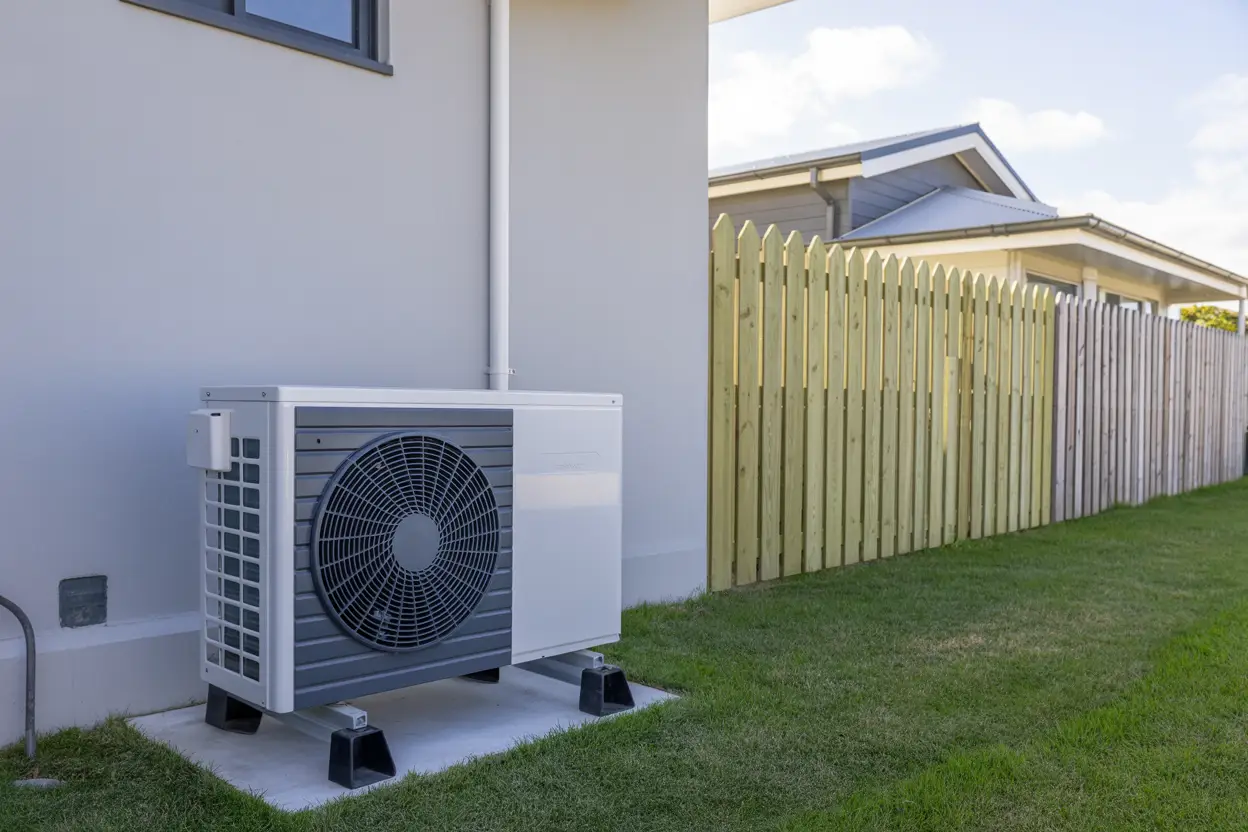Heat Pump Boundary Rules & Consent Requirements in New Zealand
Installing a heat pump in New Zealand requires careful consideration of boundary rules and consent requirements to avoid costly mistakes and neighbour disputes. Understanding these regulations before installation can save you thousands of dollars in fines and potential legal issues with your local council.
Understanding New Zealand’s Heat Pump Placement Rules
As a homeowner in Canterbury, you need to know that heat pump placement isn’t just about finding the best spot for efficiency. Your local council has specific rules about where you can install your outdoor unit, and these rules can vary significantly between districts.
The most common boundary rule across New Zealand councils requires heat pump outdoor units to be installed at least 1.5 meters from any boundary line. However, some councils like Christchurch City Council have additional requirements depending on your property’s zone and the size of your heat pump.
I’ve seen homeowners in Fendalton and Cashmere face expensive relocation costs because they didn’t check these rules before installation. The frustration on their faces when they received council notices was something I’ll never forget.
When You Need Building Consent for Your Heat Pump
Most standard heat pump installations don’t require building consent in New Zealand, but there are important exceptions you should know about. If your heat pump installation involves electrical work beyond simple connections, structural modifications, or installations in certain heritage or special character areas, you might need consent.
Here’s what typically requires building consent:
- Electrical work requiring new circuits or significant electrical modifications
- Structural changes to your home for indoor unit placement
- Installations in heritage or special character overlay areas
- Commercial or large-scale residential installations
- Ground-source heat pump installations
“I always tell my customers that it’s better to check with the council first than deal with compliance issues later,” says Nate Thompson, owner of Heat Pump HQ. “A quick phone call can save you months of headaches and thousands of dollars in potential fines.”
Noise Rules That Could Affect Your Installation
New Zealand’s noise regulations for heat pumps are something many people overlook until it’s too late. Your heat pump’s outdoor unit must comply with district plan noise limits, which typically range from 40-50 decibels during the day and 35-40 decibels at night, measured at your boundary.
Modern heat pumps are much quieter than older models, but placement still matters enormously. I’ve worked with families in Sumner and Lyttelton who needed to add noise insulation after installation because their initial placement created issues with neighbours.
The key factors affecting noise compliance include:
- Distance from neighbouring properties
- Direction the unit faces
- Natural or artificial sound barriers
- The specific decibel rating of your chosen heat pump model
Resource Management Act Considerations
The Resource Management Act (RMA) adds another layer of complexity to heat pump installations. While most residential installations fall under permitted activities, certain circumstances can trigger resource consent requirements.
You might need resource consent if your installation affects:
- Significant natural areas or ecological sites
- Coastal environments or flood-prone areas
- Historic places or areas of cultural significance
- Outstanding natural features or landscapes
In Canterbury, we also need to consider the Canterbury Regional Policy Statement, which has specific provisions for energy efficiency and renewable energy use. This can actually work in your favour, as councils often support heat pump installations that reduce carbon emissions and improve energy efficiency.
District Plan Variations Across New Zealand
Each territorial authority in New Zealand has its own district plan with specific rules for heat pump installations. What’s permitted in Auckland might not be allowed in Christchurch, and Wellington has its own unique requirements.
For example, Christchurch City Council’s district plan has specific provisions for:
- Residential zones with different boundary setback requirements
- Commercial and industrial zone installations
- Special character and heritage overlay areas
- Coastal hazard zones
Wellington City Council focuses heavily on wind exposure and seismic considerations, while Auckland has complex rules around heritage buildings and volcanic viewshafts.
The Consent Process: What You Need to Know
If you do need consent for your heat pump installation, understanding the process can help you prepare properly. The consent process typically involves submitting detailed plans, paying application fees, and waiting for council approval.
Your application will need to include:
- Site plans showing the proposed installation location
- Technical specifications of the heat pump system
- Noise assessment reports if required
- Electrical certification for any electrical work
- Neighbour consultation records if applicable
Processing times vary between councils, but you can expect anywhere from 20 working days for simple consents to several months for more complex applications.
Avoiding Common Compliance Mistakes
After working in Christchurch for over a decade, I’ve seen the same mistakes repeated by homeowners and even some installers. These errors can be expensive and time-consuming to fix.
The most common mistakes include:
- Installing too close to boundary lines without checking local rules
- Ignoring noise regulations and neighbour concerns
- Failing to get electrical certification for new circuit work
- Not considering heritage or special character overlays
- Assuming all installations are permitted activities
“Every area has its quirks,” explains Nate Thompson. “What works in Rolleston might not be suitable for Akaroa. That’s why we always check the specific rules for each location before we start any installation.”
Working with Your Neighbours
Good neighbour relationships are crucial for successful heat pump installations. Even if your installation meets all legal requirements, considering your neighbours’ concerns can save you future headaches.
Best practices for neighbour relations include:
- Discussing your plans before installation begins
- Considering the impact on their outdoor living spaces
- Choosing quieter models when possible
- Positioning units to minimize visual and noise impacts
- Addressing any concerns promptly and professionally
I’ve found that most neighbour disputes can be avoided with good communication and thoughtful planning. When neighbours feel included in the process, they’re much more likely to support your project.
Christchurch-Specific Considerations
Living in Christchurch means dealing with unique challenges that affect heat pump installations. Our nor’west winds, seismic activity, and post-earthquake building regulations all play a role in where and how you can install your heat pump.
Christchurch City Council has specific requirements for:
- Seismic restraint systems for outdoor units
- Wind loading calculations for exposed locations
- Liquefaction-prone area installations
- Flood-prone area considerations
Areas like New Brighton and Redcliffs have additional coastal considerations, while hill suburbs like Heathcote Valley and Mount Pleasant need special attention to wind exposure and access for maintenance.
Getting Professional Help
Navigating boundary rules and consent requirements can be complex, especially when you’re dealing with multiple council departments and regulations. Professional installers who understand local requirements can save you time, money, and stress.
When choosing an installer, make sure they:
- Have current electrical registration and refrigeration certification
- Understand local council requirements and processes
- Can provide building code compliance certification
- Have experience with consent applications if needed
- Offer ongoing support for maintenance and repairs
“We handle all the compliance paperwork for our customers,” says Nate Thompson. “It’s part of our service because we know how confusing it can be. Our customers shouldn’t have to worry about whether their installation meets all the requirements.”
The Cost of Getting It Wrong
Non-compliance with boundary rules and consent requirements can be expensive. Council fines for unauthorized work can range from hundreds to thousands of dollars, and you might be required to relocate or modify your installation at your own expense.
I’ve seen situations where homeowners had to:
- Pay council fines of $500-$2000 for non-compliant installations
- Relocate outdoor units at costs of $1000-$3000
- Apply for retrospective consent with additional fees and delays
- Remove installations entirely in extreme cases
The stress and expense of dealing with compliance issues after installation far outweigh the cost of getting professional advice upfront.
Future-Proofing Your Installation
When planning your heat pump installation, consider potential future changes to regulations and your property. Climate change legislation and building code updates could affect future upgrades or modifications.
Smart planning includes:
- Choosing locations that exceed minimum boundary requirements
- Installing infrastructure for future energy efficiency upgrades
- Considering integration with solar power systems
- Planning for accessibility for maintenance and repairs
Future-proofing your installation protects your investment and makes future upgrades much easier and more cost-effective.
About Heat Pump HQ
Heat Pump HQ is a locally owned, family-operated heat pump contractor founded in 2015 by Nate Thompson in Christchurch. With over 10 years of experience, we started after Nate saw customers being oversold expensive systems or receiving poor installation work at larger HVAC companies. Our mission is to provide every Christchurch home with efficient, reliable heating and cooling by finding perfect solutions for specific needs and budgets. We offer heat pump installation, repairs, and maintenance services throughout greater Christchurch and surrounding areas. Our core values include honesty first, local expertise, quality workmanship, and fair pricing with no hidden fees. We’re fully certified with electrical registration and National Certificate in Refrigeration and Air Conditioning, plus IRHACE membership.
Common Questions About Heat Pump Boundary Rules
Can I install a heat pump right against my fence?
No, most councils require at least 1.5 meters clearance from any boundary line. Check your local district plan for specific requirements in your area.
Do I need my neighbour’s permission to install a heat pump?
You don’t legally need permission if your installation complies with all council rules, but it’s good practice to discuss your plans with neighbours beforehand.
What happens if I install without checking council rules?
You could face fines, be required to relocate your unit, or need to apply for retrospective consent. It’s always better to check first.
Are there different rules for different types of heat pumps?
Yes, ground-source heat pumps often have different requirements than air-source units. Commercial installations also have different rules than residential ones.
How long does it take to get consent if I need it?
Simple consents typically take 20 working days, but complex applications can take several months. Start the process early if you need consent.
Don’t risk expensive compliance issues with your heat pump installation. Call 03 242 1023 or contact us today for a free consultation and quote, and let our local experts handle all the boundary rules and consent requirements for you.

